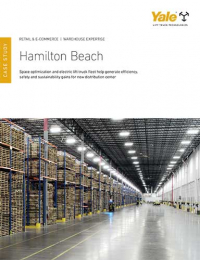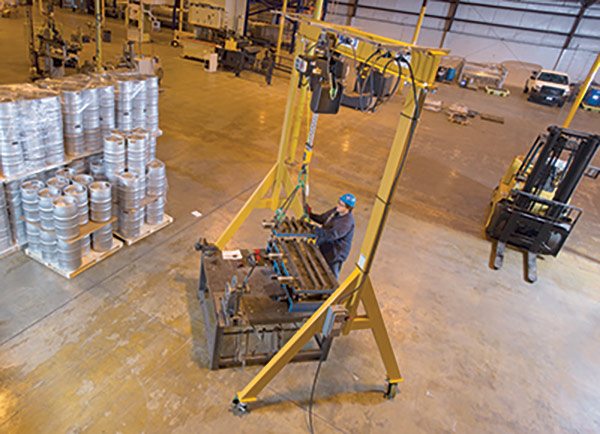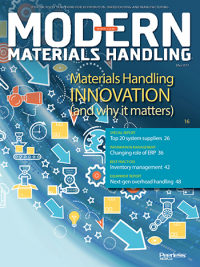Embracing the Next Generation of Overhead Handling
To improve end users’ safety and efficiency, overhead handling equipment continues to evolve.
Although overhead handling equipment has been used for decades, it’s still evolving on a consistent basis. As system and requirements change, the focus on what’s above your facility is just as important as what’s in it. Overhead handling equipment has recently evolved to help end users achieve three primary goals: increased safety, flexibility and efficiency.
With these goals in mind, suppliers are providing end users a variety of equipment options. In automation, manually operated enclosed track cranes and intelligent lifting devices are becoming more popular, as they improve safety and efficiency in a cost-effective manner. Track crane systems are transferring loads in more unique ways, while redesigned lifting components are offering end users the flexibility and protection they need on the job. And, the popularity of ergonomic systems is still rising as manufacturers release new workstation bridge cranes and monorails, gantry cranes and lever hoists that improve productivity.
Intelligent lifting devices increase safety, efficiency
As end users seek more efficient and cost-effective automation to supplement their solutions, the options continue to increase. Full automation is more affordable now than it has been in years, but semi-automation is still a more accessible option for most.
Companies have begun to integrate the strengths of both solutions instead, particularly by hiring people to perform tasks, while also using less complex automation to guide and protect the workers and eliminate any potential product damage. To achieve these goals, some companies are purchasing manually operated, enclosed track cranes to provide the x- and y-axis movement of their loads (up to 2 tons at a time) at a pace they control—fast when desired, and slow and precise when they need to accurately position a load. They’re also using intelligent lifting devices that provide z-axis movements.
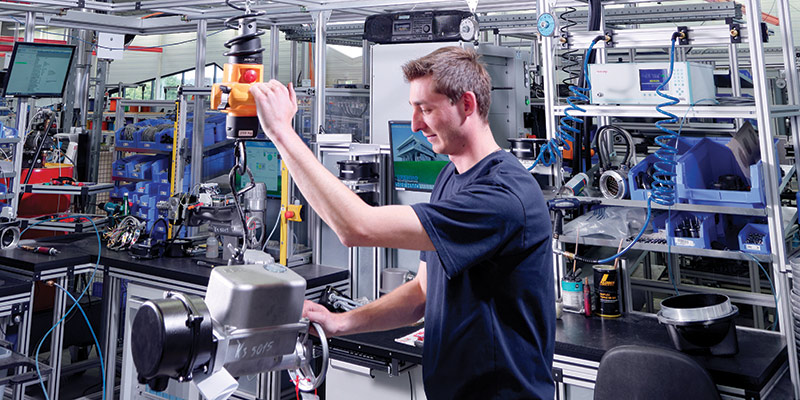
“Intelligent lifting devices use servo power and control to provide precise positioning, along with ‘virtual limits’ that prevent movements that could result in damage to parts, machines or people,” says Jeff McNeil, marketing manager at Gorbel. “The devices can also ‘learn’ where to allow operators to go (or not to go) by simply setting points of speed reduction, along with the upper and lower limits that the device can be moved to.”
To improve employee safety, especially at a time where many back and hand injuries occur—when operators choose to move loads 75 pounds or lighter by themselves—intelligent lifting devices allow a “point of speed reduction” to be set above the spot in which they need to position their load of parts. When operators are lowering their loads and they reach this point, the devices are able to lower the downward travel speed so that the loads aren’t dropped too quickly. At this point, the operators can then hit float buttons on their devices, so the parts essentially become weightless.
“Operators can then raise and lower their parts with a small amount of force and have both of their hands on their loads for positioning purposes,” McNeil explains. “If the loads aren’t in float mode, a stop point can also be used to stop the lowering of the loads so that they’re correctly positioned, thereby eliminating any part damage or risk of injury.”
In doing so, end users can enjoy the short- and long-term benefits of full automation—productivity, timeliness and accuracy—without the upfront or longstanding costs of duplicating employees’ on-the-job skill sets.
New options for transportation, flexibility and protection
In addition to combining the strengths of full automation and semi-automation, companies are also looking at overhead lifting equipment in the context of the entire production system, rather than simply a means to lift and move materials. Far too often, end users have established product systems that only allow loads to be lifted inside of work cells with crane systems, and then transfer them to all other cells with carts, conveyors or forklifts—without even considering how a crane system could instead transfer loads throughout the manufacturing process entirely by itself.
Using track crane systems, loads can be transferred in a variety of ways—from bridge crane to bridge crane, or from bridge cranes to monorails—through curves and switches. Essentially, the systems are similar to the layout of train tracks, aside from being overhead instead.
“As they plan the entire production process, more and more companies are now looking at how they can use overhead technology like track crane systems throughout the process,” McNeil says. “After all, they can be designed to transfer loads without ever having to lower them or even use any floor-based transfer system, for that matter.”
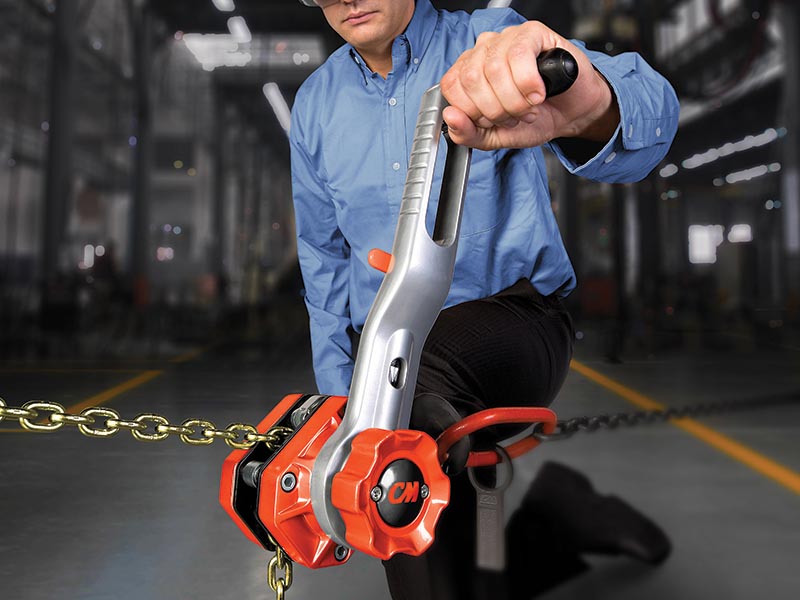
According to John Paxton, vice president and general manager of Demag Cranes and Components North America, equipment manufacturers are actually redesigning their lifting components as a means of improving modularity. Consequently, they have been able to improve the timeliness of their deliveries, lower the costs of their equipment and reduce their inventories across the entire supply chain.
The designs of their lifting equipment now include connectivity functionality so operators and companies can observe (and retain records of) their equipment fault codes, maintenance history and requirements, along with usage data.
“To ensure safer usage of the equipment, stepless controls—for smooth starting and stopping, anti-sway and off-center load picking prevention—have also recently been added by manufacturers,” Paxton says. “These additions show that overhead lifting equipment is continuing to evolve through new innovations, each with the end user in mind, all while providing them with more productivity and increased operational safety.”
Ergonomics: Portability, safety and efficiency
Due to their trussing with enclosed tracks, which improves trolley movement, as well as their V-shaped profiles that ensure the tracks remain free of debris, ergonomic systems like workstation bridge cranes and monorails are also increasing in popularity. Trussed tracks are lighter than typical I-beams, so their foundations aren’t as expensive for self-supporting systems, and ceiling-mounted systems don’t apply as much force on existing ceiling structures—a win-win scenario.
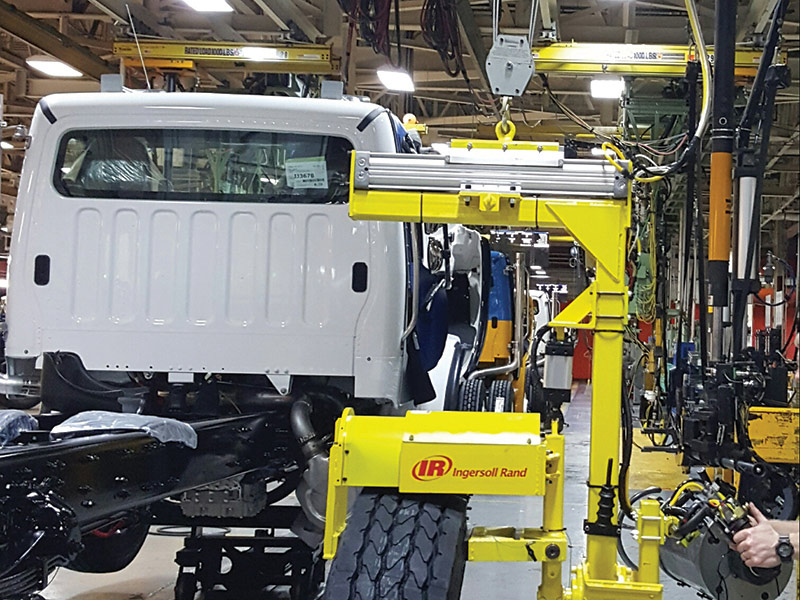
Gantry cranes have also become popular in recent years, as they are not only lightweight, but also portable and capable of lifting heavy loads. Aluminum gantries, in particular, can easily be assembled and disassembled and carried from one site to the next in work trucks. Likewise, since they aren’t permanent structures, workstation bridge cranes can easily be transferred to different facilities, too.
“Considering that lean manufacturing and ergonomic production processes are extremely popular, a lot of workstation bridge cranes and monorails are also being used in conjunction with jibs and forklifts to ensure production processes are more efficient,” says Arnie Galpin, professional engineer at Spanco. “For instance, a floor-mounted workstation bridge crane or monorail offers clearance for larger electric cranes to pass overhead, while also providing lean manufacturing processes.”
Aside from portability, end users are also dedicated to creating safer workplace environments. For example, they’re now using ergonomic lift assists that have redundant safety features, which can significantly decrease the odds of parts dropping as loads are transferred to their final destinations. Additionally, other fail safe features are available to safely lower parts in the event of an air pressure loss.
To further ensure safety, end users are also working to minimize another common mistake—when parts aren’t clamped properly or when the correct amount of vacuum isn’t used to safely lift parts—by using an “up disable” feature that prevents the part from being lifted at all, reducing the odds of worker injury considerably.
“End users are also moving back toward integrating air balancers and pneumatic controls versus the use of integrated electronics and the complex design and maintenance of servo controls on a lift assist,” says Joe Crawford, manager of ergonomic handling and industrial lifting at Ingersoll Rand. “Air balancers and pneumatic controls are easier to maintain, more economical and more dependable—resulting in less down time compared to that of electronic components.”
As safety is a top priority for overhead handling equipment manufacturers, some are taking a holistic approach by observing the ways end users interact with their products on an ergonomic level, and then conducting research to determine how equipment can be redesigned to improve safety and efficiency, says Jeff Armfield, executive director of global product strategy and product development at Columbus McKinnon.
With workplace safety and productivity in mind, Columbus McKinnon has released two new overhead handling products: a ratchet lever hoist with a unique crank feature, and a pendant with rocker switch activation.
“The crank feature allows end users to operate it with a full range of arm motion, which provides productivity and safety benefits in lifting and pulling applications,” Armfield says. “The pendant, meanwhile, has been designed to fit within the contours of the human hand, unlike traditional brick-like pendants. Its inherent shape, combined with rocker switch activation, allows more precise control with minimal hand fatigue.”
“Regardless of the products, overhead handling equipment manufacturers must continue to identify opportunities where we can help end users work smarter, safer and more efficiently, and, in turn, continue to increase companies’ bottom lines,” Armfield adds.
Companies mentioned in this article
• Columbus McKinnon Corporation
• Demag Cranes and Components
• Gorbel
• Ingersoll Rand
• Spanco
View Overhead Handling Products and Accessories
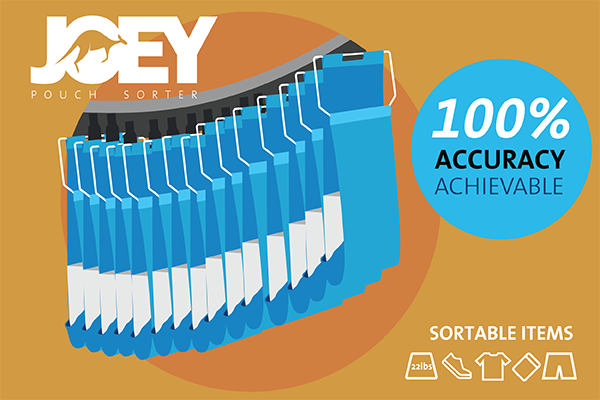 JOEY Pouch Sorter
JOEY Pouch Sorter
Flexible pouch sorter for e-commerce fulfillment.
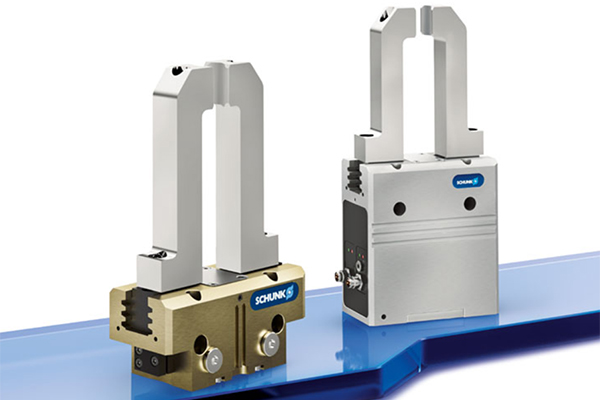 Universal grippers
Universal grippers
Pneumatically powered universal gripper.
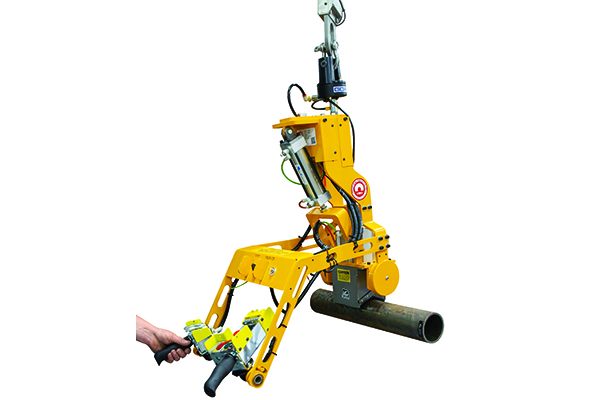 Magnetic Lift-Assist
Magnetic Lift-Assist
Lift, manipulate heavy loads with magnetic device.
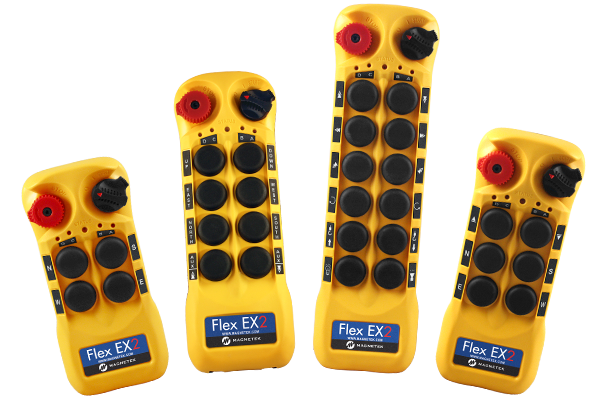 Flex EX2 wireless control
Flex EX2 wireless control
Control cranes with wireless transmitters, receivers.
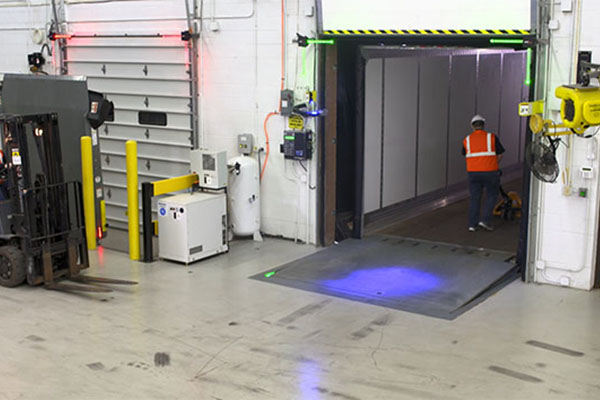 86 Series Drum Lifters
86 Series Drum Lifters
Easy to adjust, accommodates multiple drum sizes.
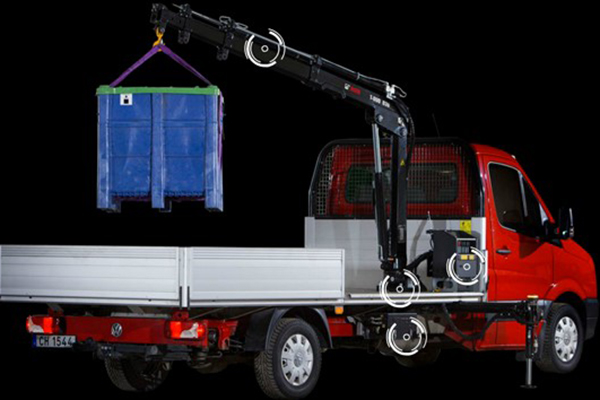 T-Series Light Range Loader Cranes
T-Series Light Range Loader Cranes
Move loads on the go with light range cranes.

Article Topics
Overhead Handling News & Resources
Monorail Manufacturers Association celebrates 90 years of monorail best practices Are Your Crane Operations Stuck in the Past? Demag demonstrates DCBS Electric Balancer and other light lifting capabilities Report: Global crane and hoist market to see 5.22% CAGR over 2020-2027 CMAA announces updates for two specifications Overhead lifting safety webinar series set for September Are exoskeletons the X factor for industrial workers? More Overhead HandlingLatest in Materials Handling
Lucas Watson appointed CSO for Körber’s Parcel Logistics business in North America Hyster recognizes Dealers of Distinction for 2023 Carolina Handling names Joe Perkins as COO C-suite Interview with Keith Moore, CEO, AutoScheduler.AI: MODEX was a meeting place for innovation Walmart deploying autonomous lift trucks at four of its high-tech DCs Coles shops big for automation Kathleen Phelps to join FORTNA as chief financial officer More Materials HandlingAbout the Author
Subscribe to Materials Handling Magazine

Find out what the world's most innovative companies are doing to improve productivity in their plants and distribution centers.
Start your FREE subscription today.
April 2024 Modern Materials Handling

Latest Resources
